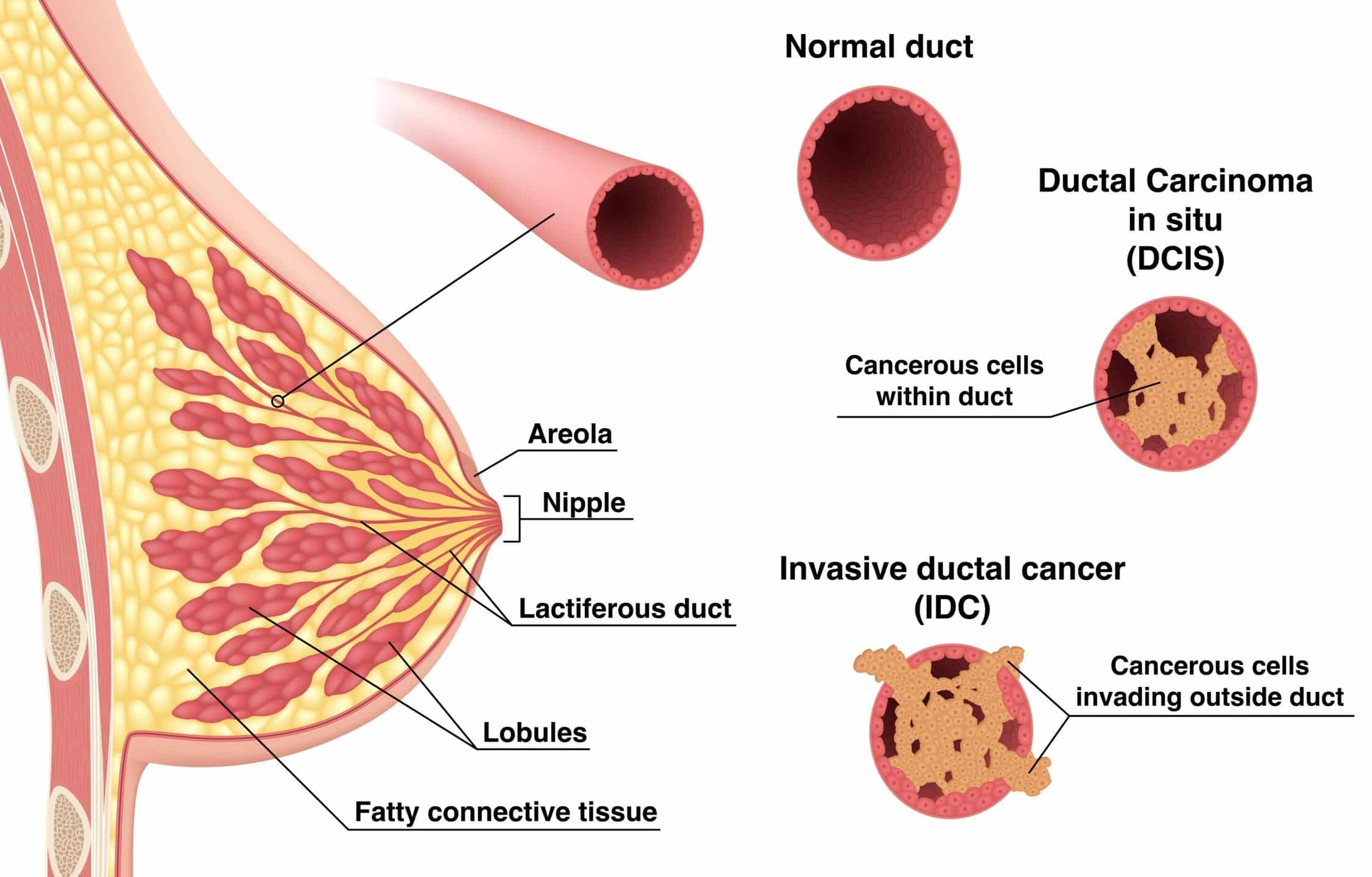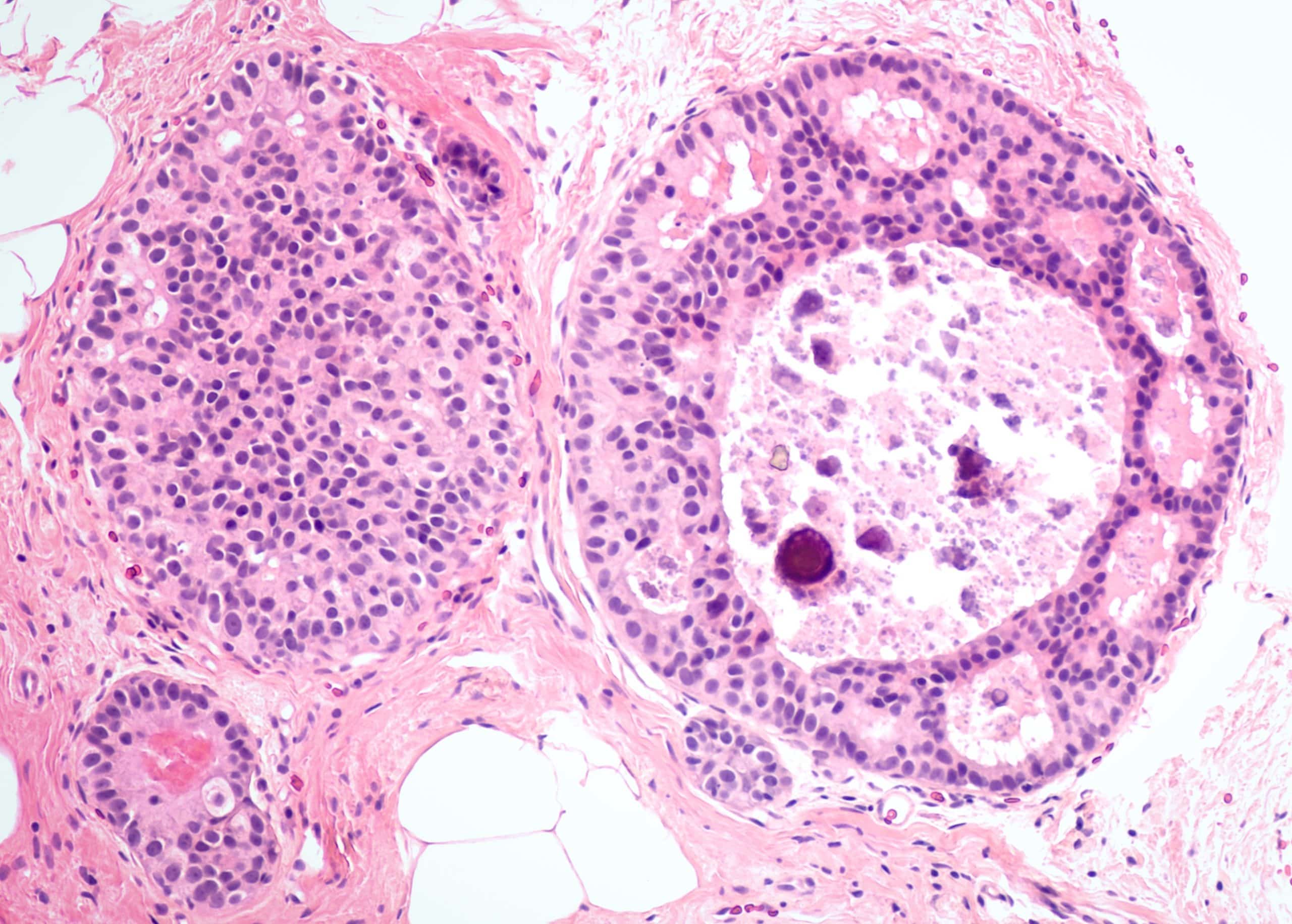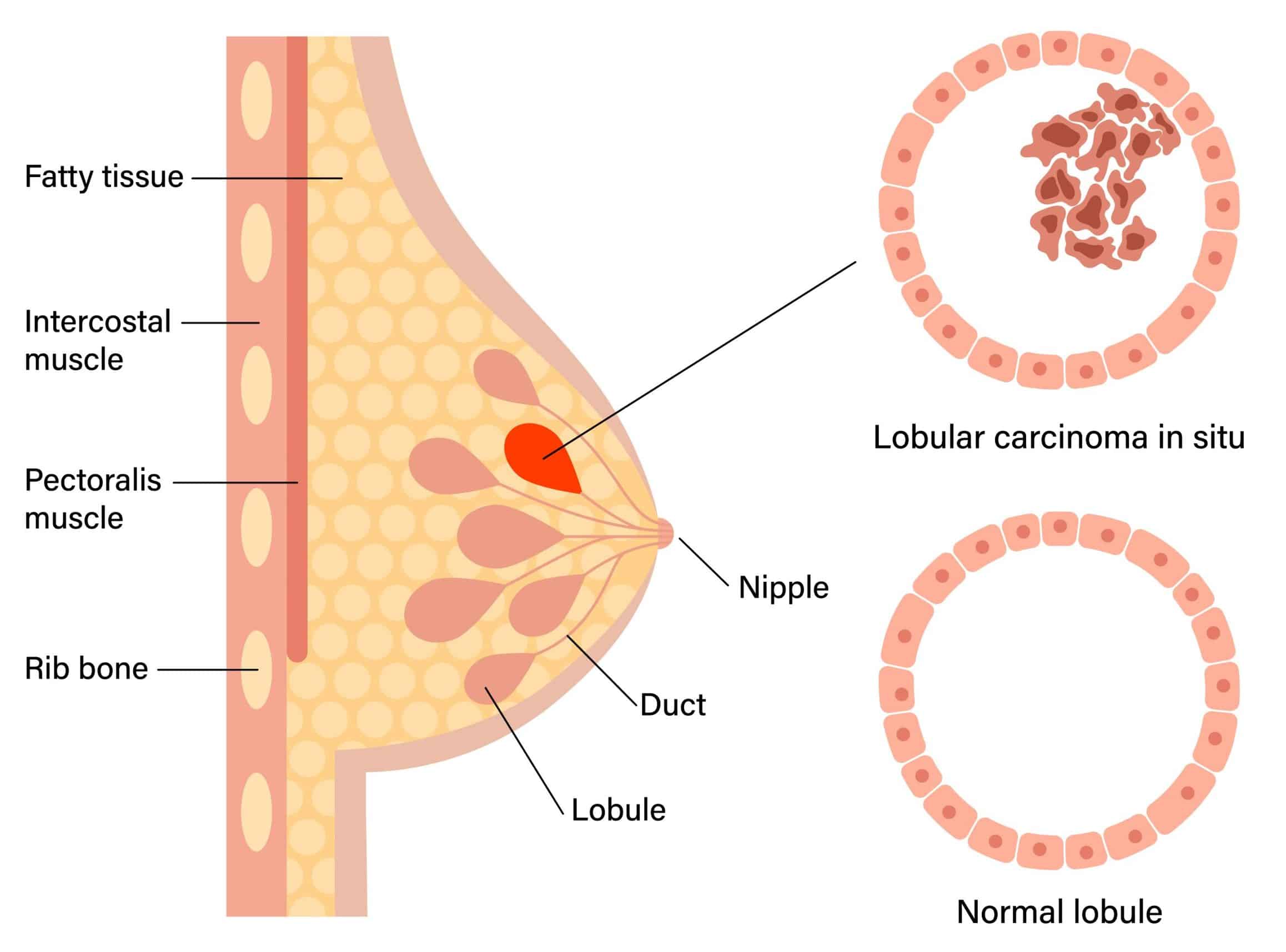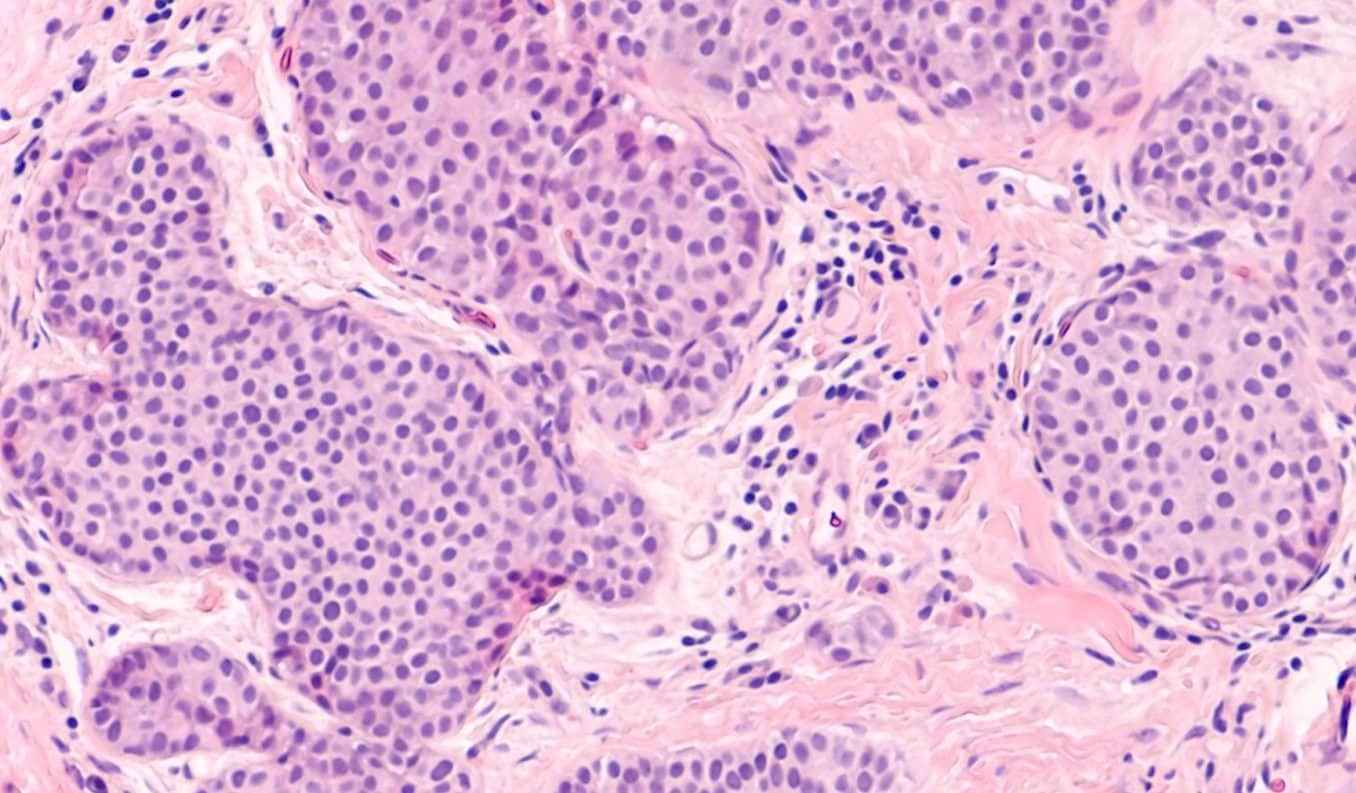Introduction
Breast Carcinoma In Situ are neoplasms that are contained within the breast ducts and have not spread into the surrounding breast tissue.
These carcinoma types represent a precursor to invasive breast cancer, they are typically identified solely on imaging, and are rarely symptomatic at presentation. The two main types of in situ breast carcinoma types are Ductal Carcinoma In Situ (DCIS) and Lobular Carcinoma In Situ (LCIS).
Ductal Carcinoma in Situ
Ductal carcinoma in situ (DCIS) is the most common type of non-invasive breast malignancy and currently comprises around 20% of all breast cancers diagnosed. It is a malignancy of the ductal tissue of the breast that is contained within the basement membrane (Fig. 1).
DCIS is is categorised into five major types based upon histological features; these subtypes are comedo, cribriform, micropapillary, papillary, and solid types, however most lesions are mixed.

Figure 1 – Illustration demonstrating difference between ductal carcinoma in situ and invasive breast carcinoma
Investigations
DCIS is often detected during screening. Around 90% of patients with DCIS will have suspicious microcalcifications seen on mammography, with the diagnosis then subsequently confirmed via biopsy (Fig. 2).

Figure 2 – Histology showing ductal carcinoma in-situ (DCIS), demonstrating the malignant cells confined to the mammary ducts
Management
Any detected DCIS should be treated with surgical excision. This is done with breast conserving surgery (wide local excision) or (in cases of widespread or multifocal DCIS) with mastectomy.
Lobular Carcinoma In Situ
Lobular Carcinoma in Situ (LCIS) is a non-invasive lesion of the secretory lobules of the breast that is contained within the basement membrane (Fig. 3).
They are much rarer than DCIS however individuals with LCIS are at greater risk of developing an invasive breast malignancy. LCIS is usually diagnosed before menopause, with only 10-20% of women diagnosed being post-menopausal.

Figure 3 – Illustration demonstrating lobular carcinoma in situ
Investigations
LCIS is usually asymptomatic, much like DCIS, however LCIS is not associated with microcalcifications; LCIS is usually diagnosed as an incidental finding during biopsy of the breast (Fig. 4)

Figure 4 – Histology showing lobular carcinoma in-situ (LCIS), demonstrating the malignant cells confined to the lobules
Management
Management of LCIS is dependent on extent of disease. Low grade LCIS is usually treated by monitoring rather than excision. When an invasive component is identified, it is less likely to be associated with axillary nodal metastasis than with DCIS. Bilateral prophylactic mastectomy can be potentially indicated if individuals possess the BRCA1 or BRCA2 genes.
Key Points
- Carcinoma-in-situ are premalignant conditions
- Typically found on imaging and are rarely symptomatic at presentation
- Two main subtypes are Ductal Carcinoma In Situ (DCIS) and Lobular Carcinoma In Situ (LCIS)
- Management depends on subtype and extent of the disease
